The construction industry is one of the areas where good alternatives periodically appear. One of them is aerated concrete. In modern construction, this material quickly gained popularity, and its demand can only be envied. But before using it for the construction, in fact, of the building, you should get to know its features better. It also doesn't hurt to know what are the advantages and disadvantages of such an alternative.
What is aerated concrete?
This term should be understood as a stone of artificial origin, which has found worthy application in the construction industry. It is relevant not only in the case of the construction of internal partitions, when filling the interframe space, but is also ideal for the construction of load-bearing structures. In this regard, many firms use different types of this material for the implementation of projects for suburban andhigh-rise buildings.
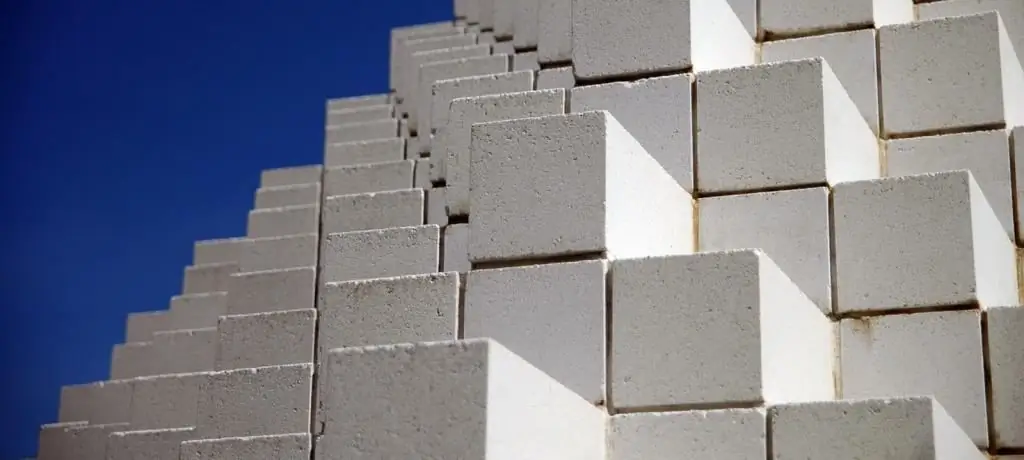
Aerated blocks have a cellular structure, and therefore have a low weight, which in turn reduces the load on the foundation. Aerated concrete is a high-tech material with low thermal conductivity and good sound insulation qualities.
Composition of blocks
The production of modern building blocks involves maintaining a certain proportion of the components used:
- cement - 50-70%;
- sand - 20-40%;
- lime - 1-5%;
- water - 0.25-0.8%.
To obtain a porous structure, foam is added to the solution itself or the mixture itself is foamed. The amount of foaming agent in this case is from 0.04 to 0.09%. The result is economical blocks that have high thermal insulation performance.
Based on this recipe, you can prepare a solution yourself by calculating how many components it will take to create blocks in the amount of one cube of aerated concrete:
- cement - 90 kg;
- sand - 375 kg;
- lime - 35 kg;
- water - 300 liters.
Foaming agent will need quite a bit - 500 grams. But getting the perfect composition at home will not work, except perhaps by experience. On an industrial scale, special equipment is used, as well as high-quality brands of cement. Therefore, the output is really high-quality blocks.
Clear advantages of aerated concrete
Wide distribution of aerated concrete blocks in constructiondue to high performance, which is in no way inferior to the properties of brick, concrete or wood. And even completely surpass these materials in several ways.
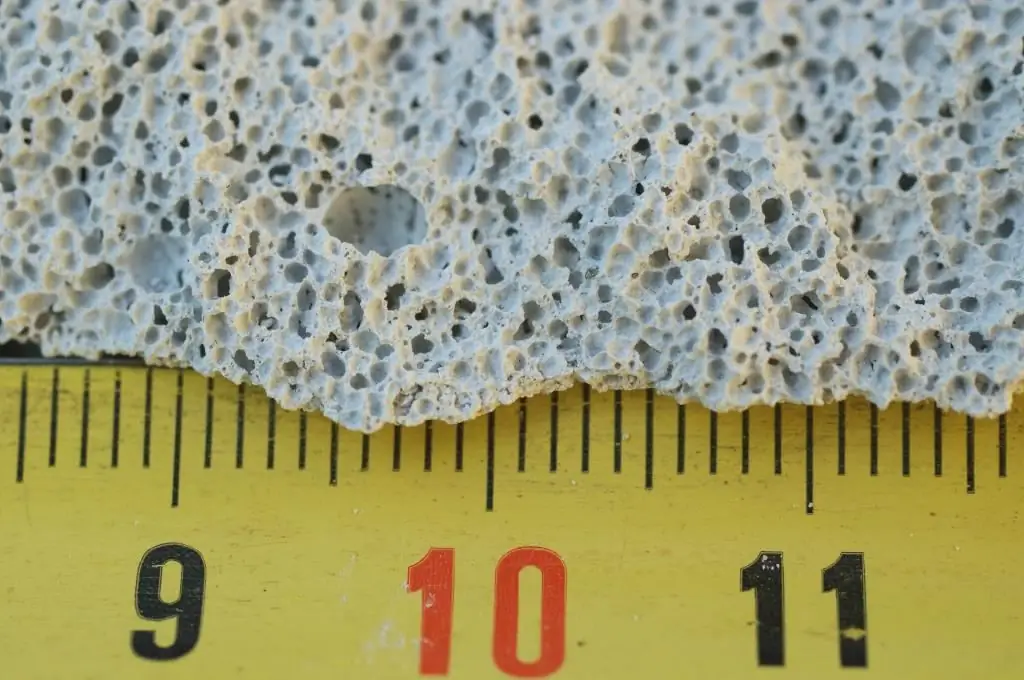
Aerated concrete is the best of many other building materials that exist today. The main properties (they are also advantages) include the following qualities:
- Strength - blocks are resistant to compression, which depends on their density and varies within the range from 1.5 to 3.5 kgf/cm2.
- Processing flexibility - aerated concrete blocks can be sawn with any hacksaw or a wall chaser can be used.
- Thermal conductivity - this parameter is at a low level, which allows you to do without additional insulation.
- Soundproofing - sound waves, passing through the pores, cells of blocks, dissipate and go out. The result is a comfortable silence, even when the building is located in the noisiest quarter.
- Incombustibility - the material itself does not burn and does not spread fire. Consequently, such buildings and structures correspond to a high degree of fire safety.
- Biological stability - even in the case of a high level of humidity (more than 90%), mold and other fungi do not develop inside the material. That is, there is simply nothing to rot, unlike wood. Accordingly, there is no need for treatment with special antiseptics.
Actually, for the sake of these obvious advantages, the material deserves the title as the best aerated concrete amongother building analogues. However, with all these obvious advantages, aerated concrete blocks have certain disadvantages. And here they are just worth considering in the first place, if necessary, use this building material. They will be discussed further.
A number of shortcomings
What is the other side of the coin in such a seemingly perfect building material as aerated concrete? First of all, we are talking about its fragility. And for this reason, before erecting any building from such blocks, it is necessary to build a reliable and stable foundation.
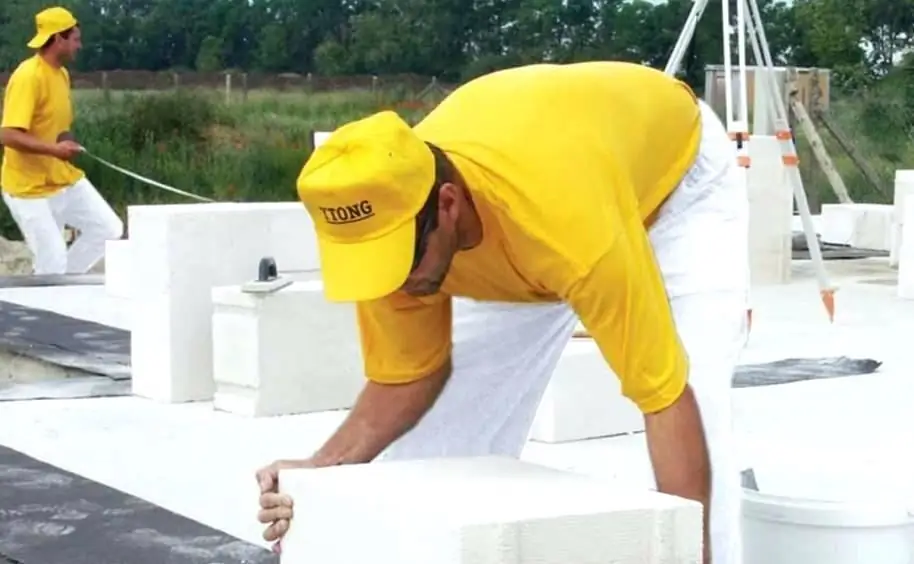
The best option is a shallow strip foundation (MFF). In addition, due to the low resistance to point loads, the fastening of heavy hinged structures should be avoided. In addition, before starting the implementation of a particular aerated concrete project, one more not very pleasant quality of building blocks should be taken into account - volumetric water absorption (it can reach a value of 25%).
As a result, finishing work is very difficult - when aerated concrete absorbs a large amount of moisture (from precipitation), the plaster will simply fall off. To reduce water absorption, the outer surface of the walls should be treated with a special deep penetration waterproofing compound.
Scope of application
Aerated concrete blocks due to environmental friendliness, as well as other qualities, have found not only mass application. This is the best option for individual construction. Actually, this material is of interestmost owners of private suburban areas.
Schools, hospitals, government agencies - these and many other construction projects today are built mainly from aerated concrete. Due to the large dimensions of the sides, buildings are erected as soon as possible. At the same time, aerated concrete is suitable not only for the construction of new buildings, its use is also relevant in the case of restoration of old structures.
Rear-bearing walls
The main scope of aerated concrete is the construction of load-bearing structures. From these blocks you can build a two- or three-story house. However, in each case, it is necessary not to lose sight of the technical parameters of this building material.
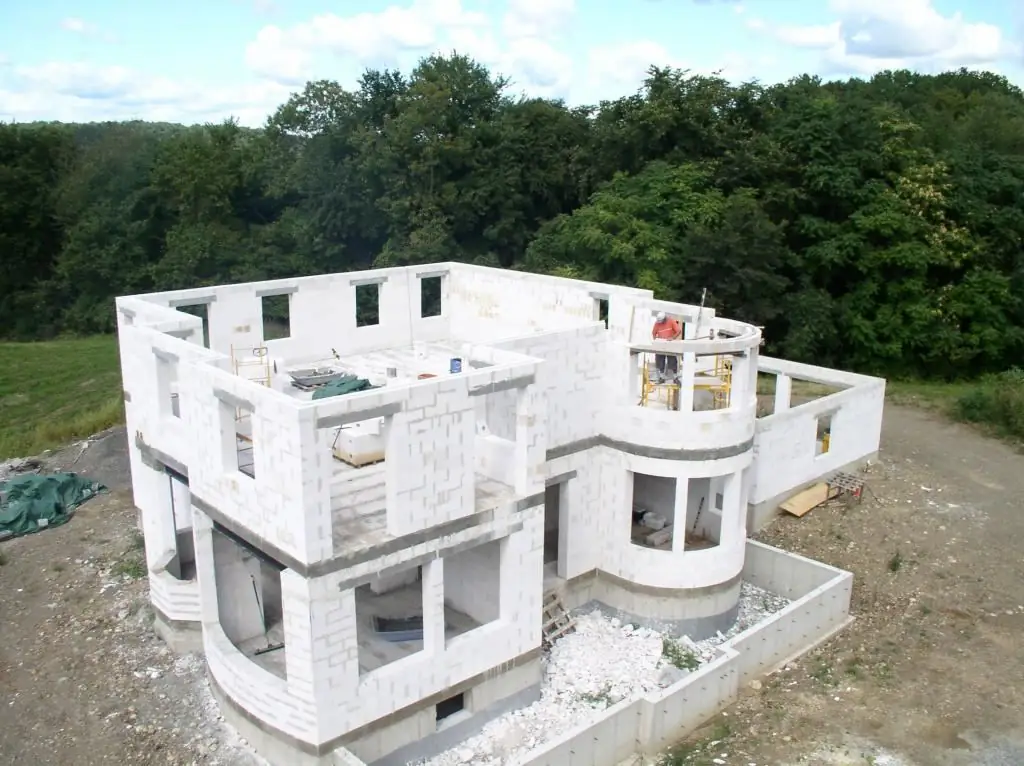
That is, for the construction of a building one or two floors high, you can use blocks with a thickness of 375 mm (at least!) - D400. At the same time, insulation is not required, except perhaps at the whim of the owner of the future building. If you need to build a house with a large number of levels, you must opt for the D500-D600 classification. Mineral wool is also useful here as a heater.
Monolithic skyscrapers
Demand for structures using autoclaved aerated concrete in construction is only increasing every year. This material is ideal for use in the construction of multi-storey buildings. Of course, their frame is based on the usual reinforced concrete structure, since the blocks themselves, due to their design features, simply cannot withstand such a load. They areused for the construction of external walls and partitions. Why are D300-D600 grades usually taken.
Due to the fact that these elements are light in weight, which is considered their main advantage, the overall load on the foundation is noticeably reduced. In addition, as we now know, such walls are able to retain heat.
Intermediate walls
Aerated concrete is not only the basis for the construction of load-bearing walls (within reason), but also a good material for arranging internal partitions of various buildings and structures. And all again thanks to good performance:
- excellent sound insulation;
- ability to retain heat;
- strength and reliability.
Properties and applications of aerated concrete should not be underestimated. The use of this building material is also explained by the fact that the blocks are created with different thicknesses.

This allows them to be used in a variety of projects for the sale of private real estate, multi-storey buildings, as well as for the formation of office or commercial premises.
How about a fence?
From blocks of aerated concrete not only buildings and structures are built, this material is also suitable for building a fence, reliably covering a private area. This is the best option for those people who prefer privacy. Of course, the building materials market can offer a wide range for the construction of such objects of "small architectural form". However, these blocks in this industry are also capable ofworthy competition to many analogues.
The use of aerated concrete in the construction of fences implies certain advantages:
- easy installation;
- affordable price;
- durability of construction.
At the same time, there are some nuances. Before you start building walls, you need to lay the foundation. After that, perform a good waterproofing. And then proceed directly to the construction of walls.
Construction of baths
Due to their performance, aerated concrete blocks are an ideal material for building a bath. And without this building, not a single piece of private suburban real estate can do. Firstly, high thermal insulation, and secondly, affordability!
As with the construction of a block fence, these types of aerated concrete projects also require the construction of a foundation on which the entire building will rest. You also need to perform high-quality waterproofing. At the end, it remains to carry out finishing work inside and out. At the same time, the outer surface can be hidden under siding or ceramic tiles.
Construction of industrial facilities
As you know, the economy of any country largely depends on the development of the industrial sector. But this is not only the flow of certain resources to the state treasury, but also the provision of new jobs. At the same time, the industry itself cannot exist without the corresponding buildings.
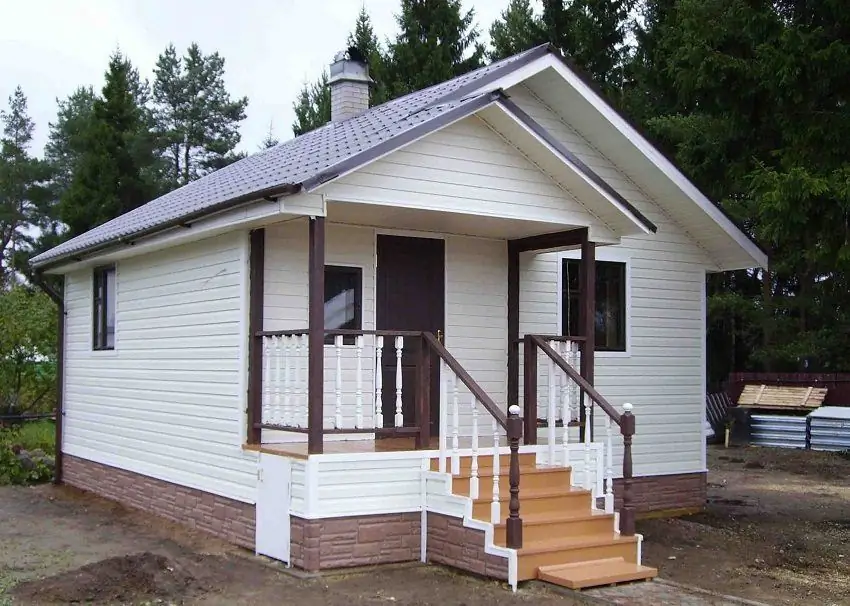
The key role here is given to the time of constructionbuildings, for which there are frame and frameless mounting options. However, the inclusion of numerous metal structures is fraught with considerable financial costs. But why pay more if there is a good alternative in the form of aerated concrete blocks? But this is the most common material in modern construction, so why not use it for the benefit of the industry?
However, the use of aerated concrete in the construction of such facilities is fraught with certain nuances. If other objects are influenced by various external factors (mainly weather), then some industrial facilities are characterized by the impact of an aggressive environment. Therefore, in this case, it becomes necessary to use appropriate means.
One of them is diabase flour, which is an acid-resistant powder to be added to building mixtures to protect masonry walls from exposure to active chemicals. At the same time, the dry mix in its pure form does not in itself pose a threat to people and the environment.
We are already aware of the many positive aspects that are present in aerated concrete, the use of diabase flour will only strengthen such a duo, which will just be relevant for industrial facilities.
Need to reinforce aerated concrete blocks
During operation, any structure is systematically subjected to a deforming effect. Often this leads to the formation of cracks, which are caused by various factors:
- structure shrinkage;
- temperature fluctuations;
- progresssoil;
- impact of wind and snow loads;
- there is no rigidity at the junction of the walls.
In addition, door and window openings noticeably weaken the entire masonry. This is especially critical in relation to load-bearing structures.

The formation of cracks is a dangerous phenomenon, because even as thick as a human hair they spoil the appearance of the structure. In addition, the bearing capacity of the walls drops noticeably. Thanks to the reinforcement of aerated concrete building blocks, various destructive factors can be avoided.
This is done by incorporating metal elements that are capable of absorbing tensile forces. And due to this, the entire frame of the building is given the necessary rigidity, which protects the weakened sections of the masonry from deformation.
As a conclusion
The use of aerated concrete blocks in modern construction is fraught with great prospects and groundwork for the future. This is an effective material that is suitable for the construction of various objects. And since the cost of the blocks is available to a wide range of consumers, this is just a real salvation for those private homeowners. Everyone who has already built a cottage or a mansion on their land from aerated concrete has personally seen this.
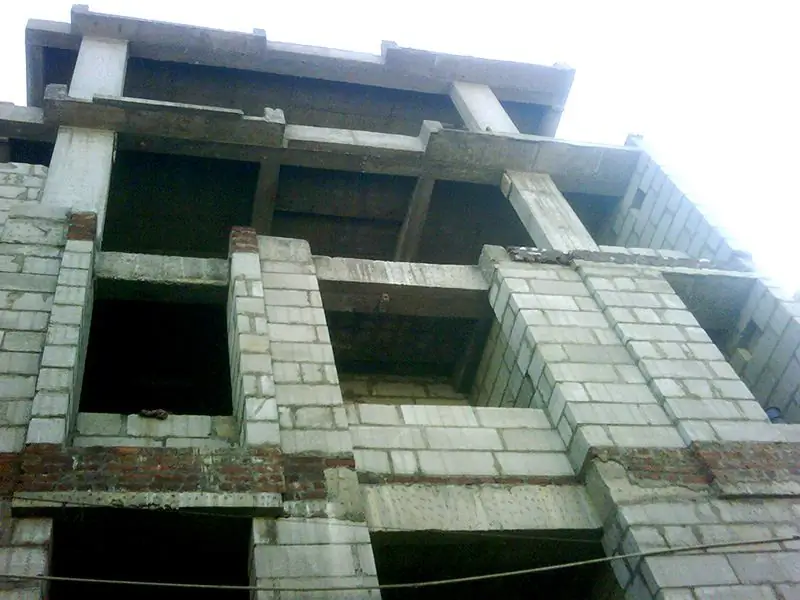
In many respects, it is precisely because of the price of building elements that the demand for them is growing. And perhaps in the next few decades, this material will not lose its relevance. At least until thenmoment, until a new solution is invented, which will significantly surpass aerated concrete in its qualities. But for now, we have what we have, and this cannot but rejoice.






